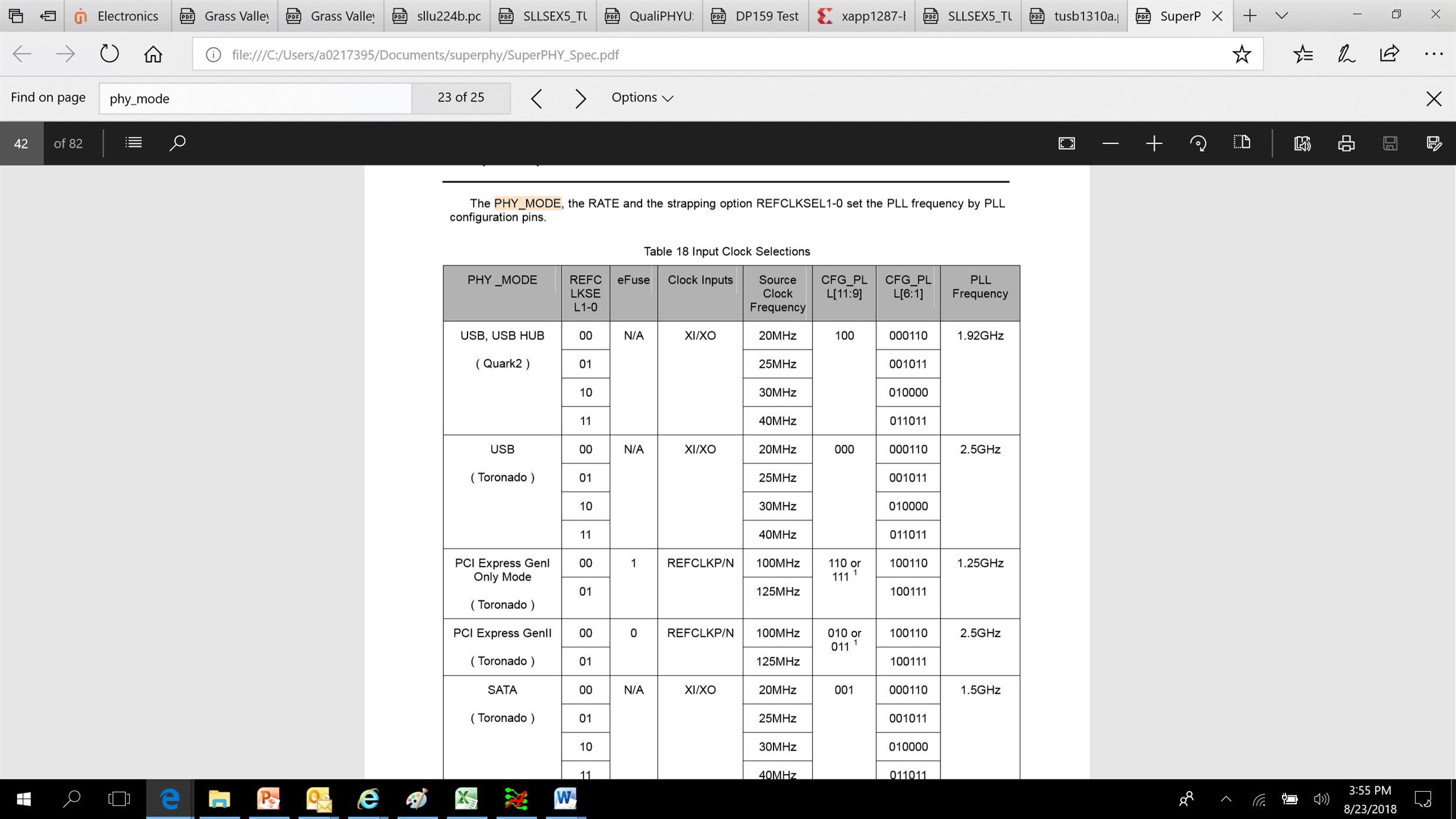Other Parts Discussed in Thread: TUSB1310
Hello,
How are settle the REFCLKSEL1,0 signals?
In data sheet it seems to have two different ways:
Table 3-8. Strapping Options, the REFCLKSEL1,0 signals come from ULPI_DATA4,5 state value latching at reset release.
But page 22 it is written "REFCLKSEL1-0 is determined depending on the PHY_MODE pins"
So which one is the good?
Thanks,
Pierre.


